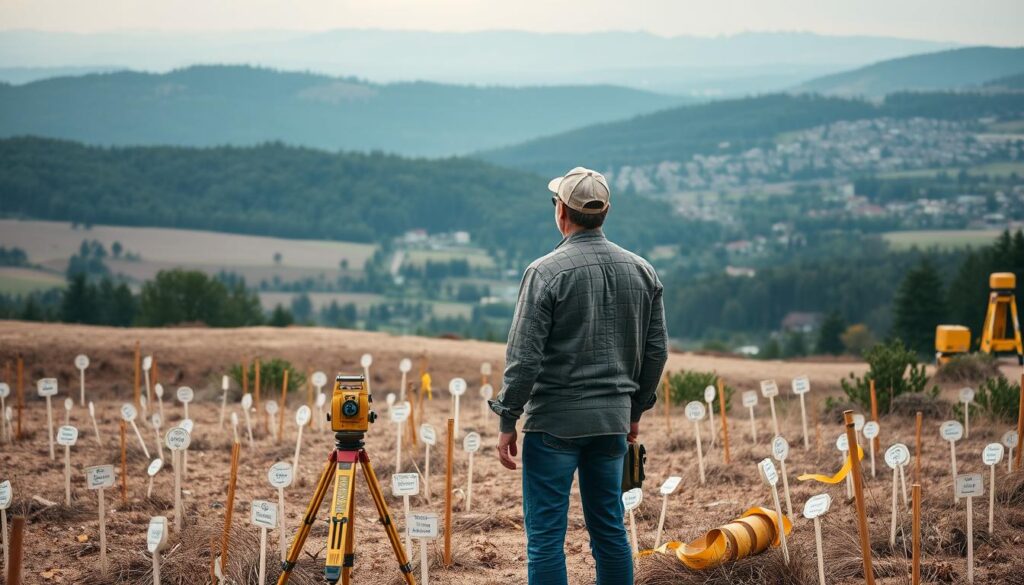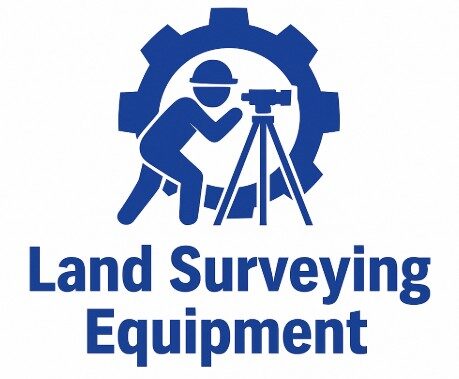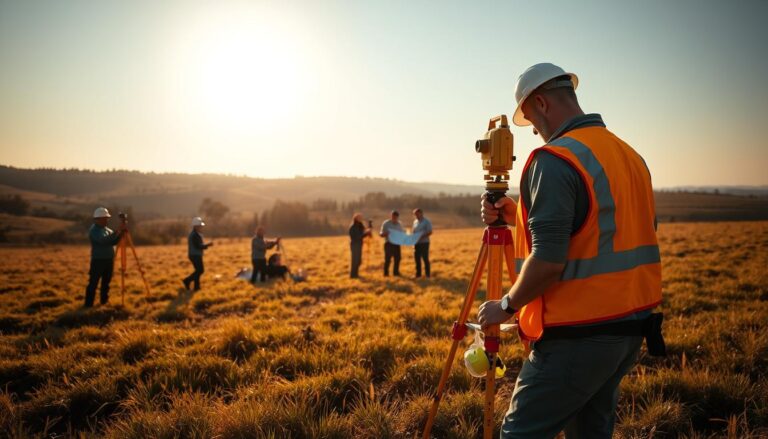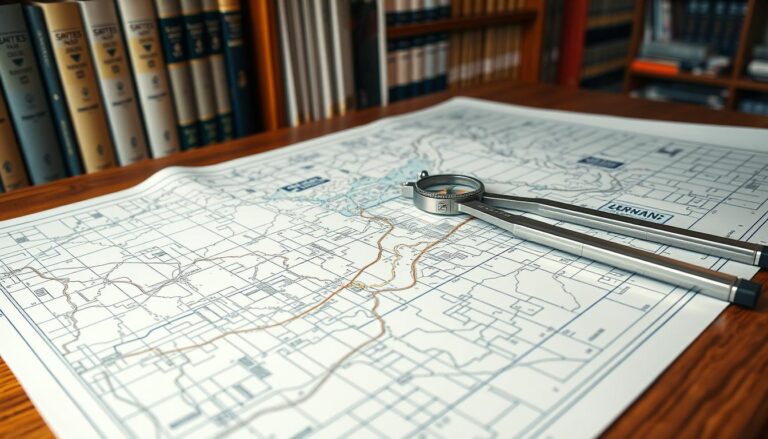Boundary Battles and Ethical Dilemmas: Surveyors Tough Questions
Land surveying isn’t just about math and measurements – it’s about messy human emotions, bitter property lines, and ethical decisions that can make or break your reputation. Where do you draw the line between “good enough” and “good enough to get sued?” Let’s dive into the gray areas, the tough calls, and the professional code every serious surveyor wrestles with sooner or later.
Professional land surveyors are key in solving disputes. They use their knowledge and exact measurements to define property lines.
In boundary disputes, surveyors lead the way. They tackle tough issues and face ethical dilemmas.
Surveyors use their skills to make property lines clear. This helps solve disputes quickly and right.
Key Takeaways
- Land surveyors provide critical expertise in resolving boundary disputes.
- Surveyors must navigate complex ethical dilemmas in their work.
- Precise measurements and clear records are essential in resolving disputes.
- Surveyors play a key role in ensuring that property boundaries are clearly defined.
- Efficient dispute resolution relies on the expertise of land surveyors.
The Professional Landscape of Modern Surveying
The surveying industry is always changing. Professionals must deal with new rules and tech. Land surveying has grown more complex, with many challenges for surveyors.
Evolution of Surveying Ethics in America
Surveying ethics in America have evolved over time. They’ve been shaped by history, law, and new tech. The field now focuses more on property boundaries and solving disputes.
Today’s Challenges in a Changing Industry
Surveyors today face many challenges. They deal with ethical dilemmas and must keep up with new rules and tech. New tools like drones and GPS bring up questions about data and privacy.
Surveyors must mix technical skills with human understanding. They must do this while keeping high ethical standards.
Knowing the history and current issues in surveying helps us see its complexity. It shows why ethics are so crucial in this field.
Boundary Battles and Ethical Dilemmas: The Tough Questions Surveyors Face
Surveyors deal with tough questions in boundary disputes. They need both technical skills and strong ethics. These experts must solve complex property disputes fairly and accurately.
The Intersection of Technical Skill and Ethical Judgment
Surveyors face many surveyor challenges. They need to mix technical knowledge with ethical decisions. For example, finding property lines involves using professional ethics and understanding legal and historical documents.
- Accurately measuring and mapping property lines
- Resolving discrepancies between historical records and modern measurements
- Maintaining impartiality in disputes between neighbors or stakeholders
When Professional Standards Meet Real-World Scenarios
In real life, surveyors use professional ethics to make decisions. They think about how their work affects everyone in property disputes. For instance, changing a boundary might block a homeowner’s way to their property.
Surveyors use their skills and ethics to tackle these problems. Important things to consider include:
- Ensuring accuracy and precision in measurements
- Maintaining transparency in their methods and findings
- Upholding professional ethics to build trust among clients and stakeholders
Surveyors are key in solving boundary disputes fairly. They show how important both technical skills and ethics are in their work.
Boundary Disputes: When Surveyors Become Referees
When property lines are in question, surveyors face a tough challenge. They must deal with both the technical and emotional sides of disputes. These issues go beyond just numbers; they involve legal rights, history, and personal feelings.
The Emotional Component of Property Lines
Property lines are more than lines on a map. They define our property and our sense of security. When these lines are disputed, it can turn neighbors against each other. Surveyors need to be good at both technical skills and handling people’s feelings.
Boundary disputes can be very emotional. Homeowners might feel their rights are being threatened. Surveyors must be empathetic, seeing their role as more than just measuring.
Balancing Technical Findings with Human Factors
Surveyors face a big challenge in boundary disputes. They must balance their precise findings with the emotional side. Expert tips can help them understand these complex situations better.
Imagine a case where two neighbors argued over a few inches of land. The dispute turned into a big fight, with both sides claiming they were right. The surveyor had to find the right boundary and explain it in a way both could agree on. With patience and mediation, the surveyor helped solve the problem peacefully.
This story shows how important surveyors are in boundary disputes. They need technical skills, legal knowledge, and the ability to work with people. By understanding the emotional side, surveyors can find fair solutions that respect everyone’s rights.
Dual Representation: Should You Work for Both Sides in a Dispute?
Surveyors face a tough ethical dilemma when asked to work for both sides in a dispute. This often happens in boundary disputes where both parties need the surveyor’s help. The surveyor must think carefully about accepting this role.
The Conflict of Interest Conundrum
Dual representation raises big concerns about conflicts of interest. Surveyors are meant to stay neutral and give fair services. But, working for both sides can make it hard to stay impartial, which could break professional ethics.
Surveyors must decide if they should help their clients or give a fair view of the situation. Working for both sides can make it hard to stay neutral. This could hurt their reputation.
Legal and Ethical Implications
The legal and ethical implications of working for both sides are big. Surveyors need to know the laws and ethics they must follow. Breaking these rules can lead to legal trouble and harm their career.
Practical Strategies for Maintaining Neutrality
To deal with the issues of working for both sides, surveyors can use some strategies. First, they should clearly explain their role and what they will do at the start. They should also tell both sides about the risks of working for both.
- Keep open communication with both sides to be clear.
- Keep detailed records of all talks and agreements.
- Think about getting independent legal advice to follow the law and ethics.
By using these strategies, surveyors can handle the risks of working for both sides. This helps them stay true to professional ethics. It also makes them better at handling tough surveyor challenges.
The Great Pricing Debate: Why Undervaluing Your Services Hurts the Whole Industry
Undervaluing surveying services is a big problem that harms the profession. The land surveying industry is struggling to find the right balance. It needs to offer competitive prices while still showing the value of professional services.
The Race to the Bottom: Competitive Pricing vs. Professional Worth
The push for low prices can cause a “race to the bottom.” Surveyors might lower their prices to get more work. This hurts their business and the value of professional surveyors in the industry.
Key consequences of undervaluing surveying services include:
- Reduced quality of work due to cost-cutting measures
- Decreased client understanding of the value provided by surveyors
- Increased risk of errors and liability issues
Educating Clients on the Value of Quality Surveying
Surveyors need to teach their clients about the value of quality surveying. This helps clients see why accurate and reliable surveys are important.
Effective education strategies include:
- Explaining the methodology and technology used in surveys
- Highlighting the potential risks of inaccurate surveys
- Showcasing the benefits of professional surveying services
Setting Fair Rates That Reflect Your Expertise and Experience
Surveyors should set fair rates that show their skills and experience. They need to figure out costs, know market rates, and explain the value of their services to clients.
Best practices for setting fair rates include:
- Conducting market research to understand industry standards
- Factoring in the complexity and risk associated with each project
- Clearly explaining the pricing structure to clients
How Accurate Is ‘Accurate Enough’? Precision, Liability, and Professional Judgment
The surveying profession values accuracy highly. Yet, it asks a key question: what does ‘accurate enough’ mean? Surveyors walk a thin line between being precise and practical. They must think about their tools’ limits and the legal and ethical sides of their work.
Standards of Accuracy Across Different Types of Surveys
Surveys vary in their accuracy needs. For example, boundary surveys need a lot of precision to mark property lines right. On the other hand, topographic surveys focus more on land features, so they can be less precise.
- Boundary surveys: High precision required
- Topographic surveys: Moderate precision required
- Construction surveys: High precision required for layout and stakeout
When Perfection Isn’t Possible: Making the Tough Call
Surveyors sometimes can’t get perfect accuracy. This might be because of equipment limits, weather, or budget. In these cases, professional judgment is key. They must decide what accuracy is needed based on the project.

To avoid legal trouble, surveyors should document their methods, limitations, and assumptions. This shows they’re transparent and accountable. It also helps protect their reputation and client trust.
In summary, finding the right balance in surveying is complex. It involves understanding the project, the limits of surveying, and ethics. By making informed decisions and documenting them, surveyors can fulfill their duties while keeping risks low.
Historical Records vs. Modern Measurements: Resolving Discrepancies
In boundary determination, the clash between historical records and modern measurements is a big challenge for surveyors. This difference can cause boundary disputes and needs careful analysis to solve.
The Challenge of Conflicting Evidence
Historical records are the base for property boundaries. But, modern measurements can sometimes disagree with these records. Surveyors must look closely at both the old and new data to find the most reliable evidence.
The problem is mixing old and new data. Historical records might be wrong, missing, or from old surveying methods. Modern measurements are more precise but can be affected by equipment or environment.
Legal Precedents and Professional Standards in Boundary Determination
Surveyors use legal precedents and professional standards to make decisions with conflicting evidence. These rules help ensure fair and consistent boundary determinations, considering the complexities of surveyor challenges.
Decision-Making Framework for Contradictory Data
A clear decision-making framework is key for solving differences between historical records and modern measurements. This framework should look at several things:
- The reliability and accuracy of historical records
- The precision and limitations of modern measurements
- Legal precedents and relevant case law
- Professional standards and best practices in surveying
By carefully looking at these factors, surveyors can make informed decisions. These decisions help solve boundary disputes and keep property boundaries intact.
Technology Ethics: Data Privacy and Digital Responsibilities in Surveying
Technology has changed surveying a lot, bringing up big ethical issues. These issues are about keeping data safe and being responsible online. Surveyors use new tools and methods, which means they have to deal with data security and privacy.
Client Information Security in the Digital Age
Keeping client info safe is very important today. Surveyors deal with private data like property lines and client details. They must protect this data from hackers and unauthorized access. Strong data security steps are not just good ideas, they’re a must.
- Using encrypted data storage
- Secure data transmission
- Keeping software and systems up to date
Drone Usage and Property Privacy Concerns
Drones are now used a lot in surveying, making work faster and more accurate. But, they also bring up big privacy issues. Surveyors need to think about privacy problems when using drones. They should make sure their drone work is clear and follows the rules.
Emerging Ethical Questions in Modern Surveying Technology
New tech like AI and machine learning is changing surveying, but it also brings up new ethics questions. Issues like data bias and who’s responsible for automated decisions are big challenges. Surveyors need to keep learning and growing to handle these ethics problems.

The ethics of surveying are always changing because of new tech. By focusing on data privacy, being careful with drones, and keeping up with new ethics, surveyors can keep their work ethical in the digital world.
Conclusion: Navigating the Ethical Landscape with Confidence and Integrity
Surveyors face complex ethical challenges. They must follow professional standards and ethics with confidence and integrity. This is key to maintaining high professional standards.
We’ve looked at several challenges surveyors face, like boundary disputes and the impact of technology on privacy. It’s important to understand their responsibilities to handle these issues well.
By sticking to professional ethics, surveyors ensure their work is honest, accurate, and in their clients’ best interests. As the field evolves, it’s crucial for professionals to stay alert to ethical issues and keep client trust.
Successfully navigating ethics is vital for surveyors and the industry. It helps them be trusted professionals, offering valuable services while upholding ethics.






